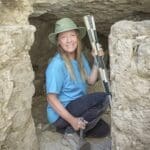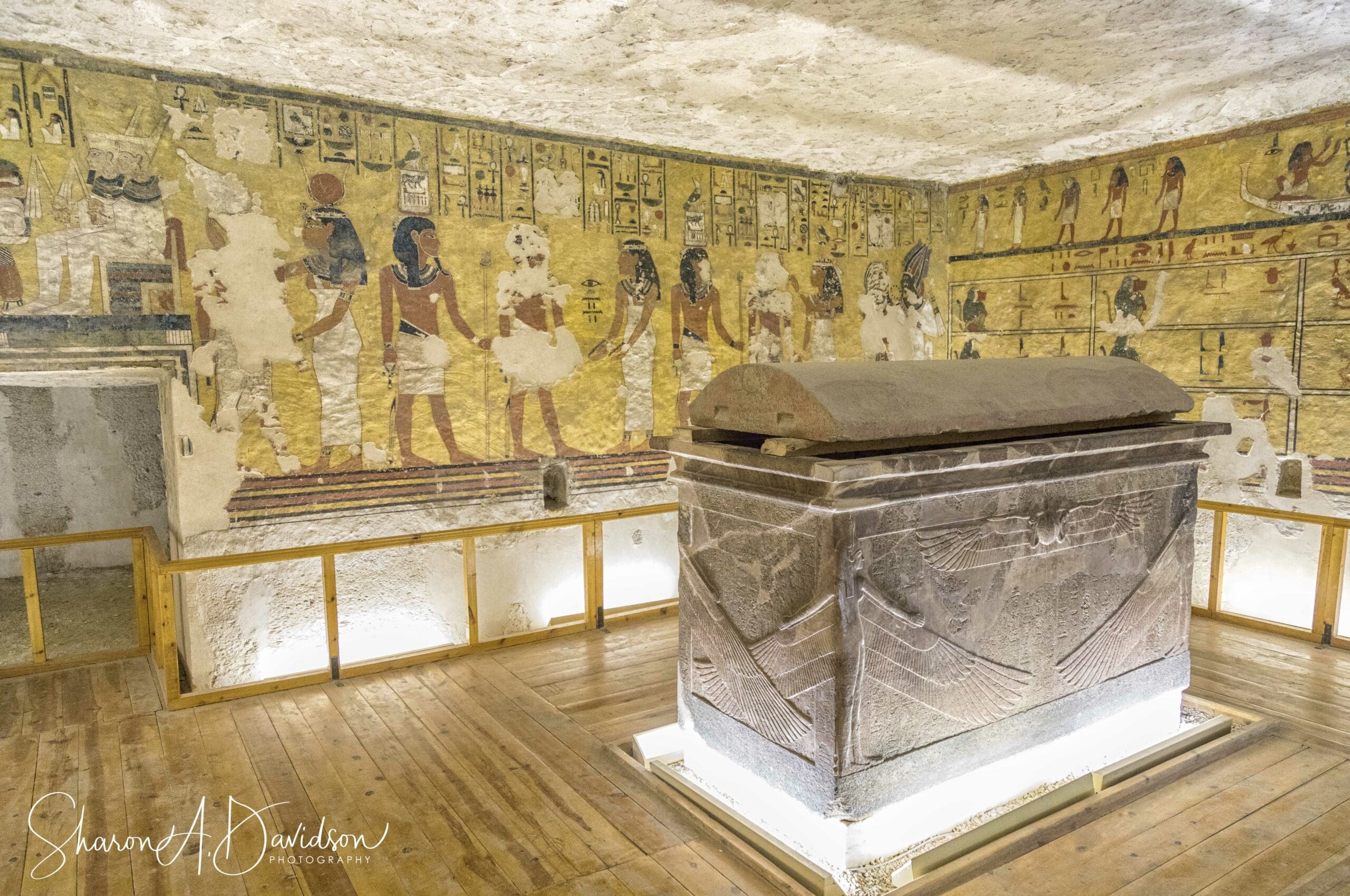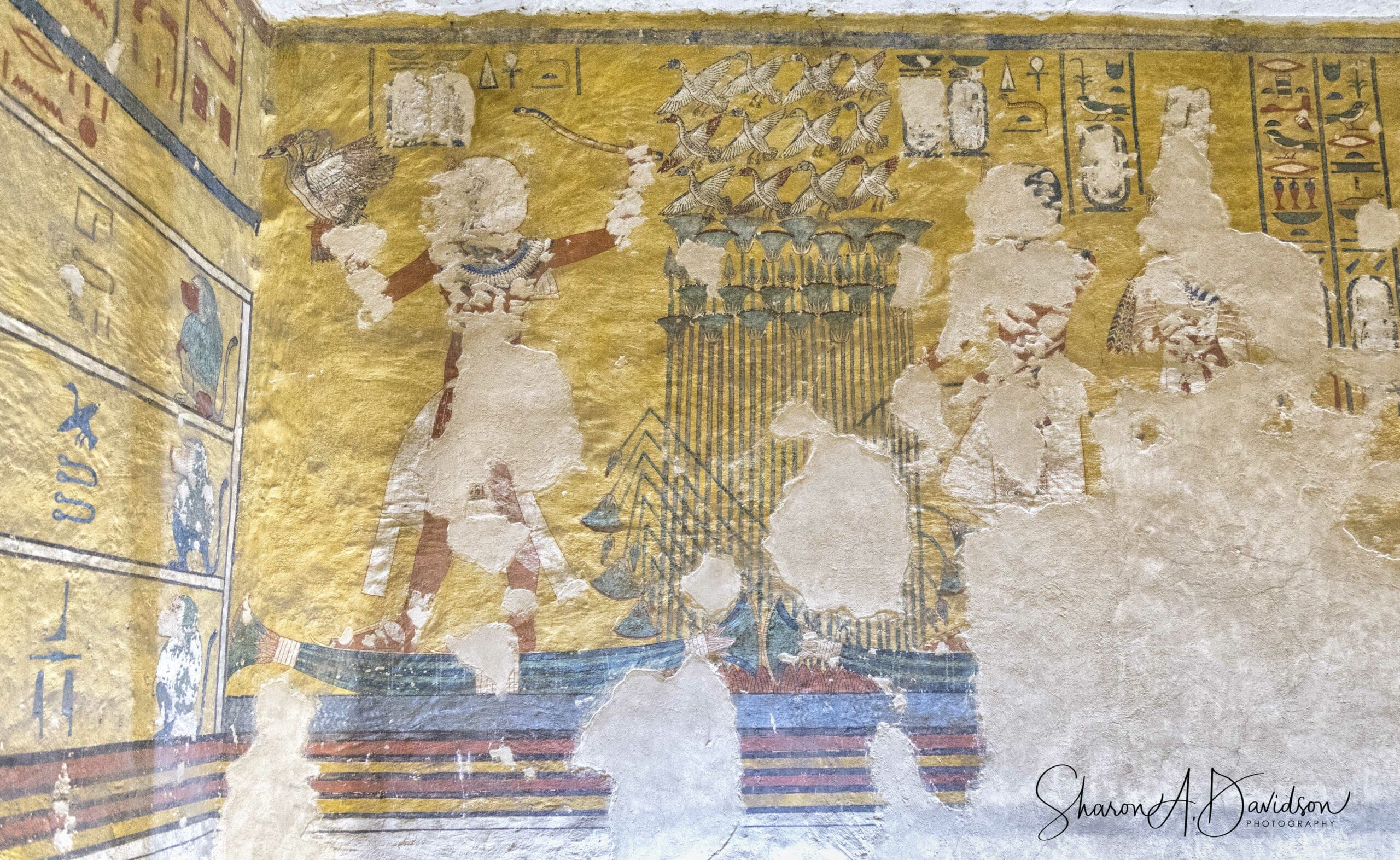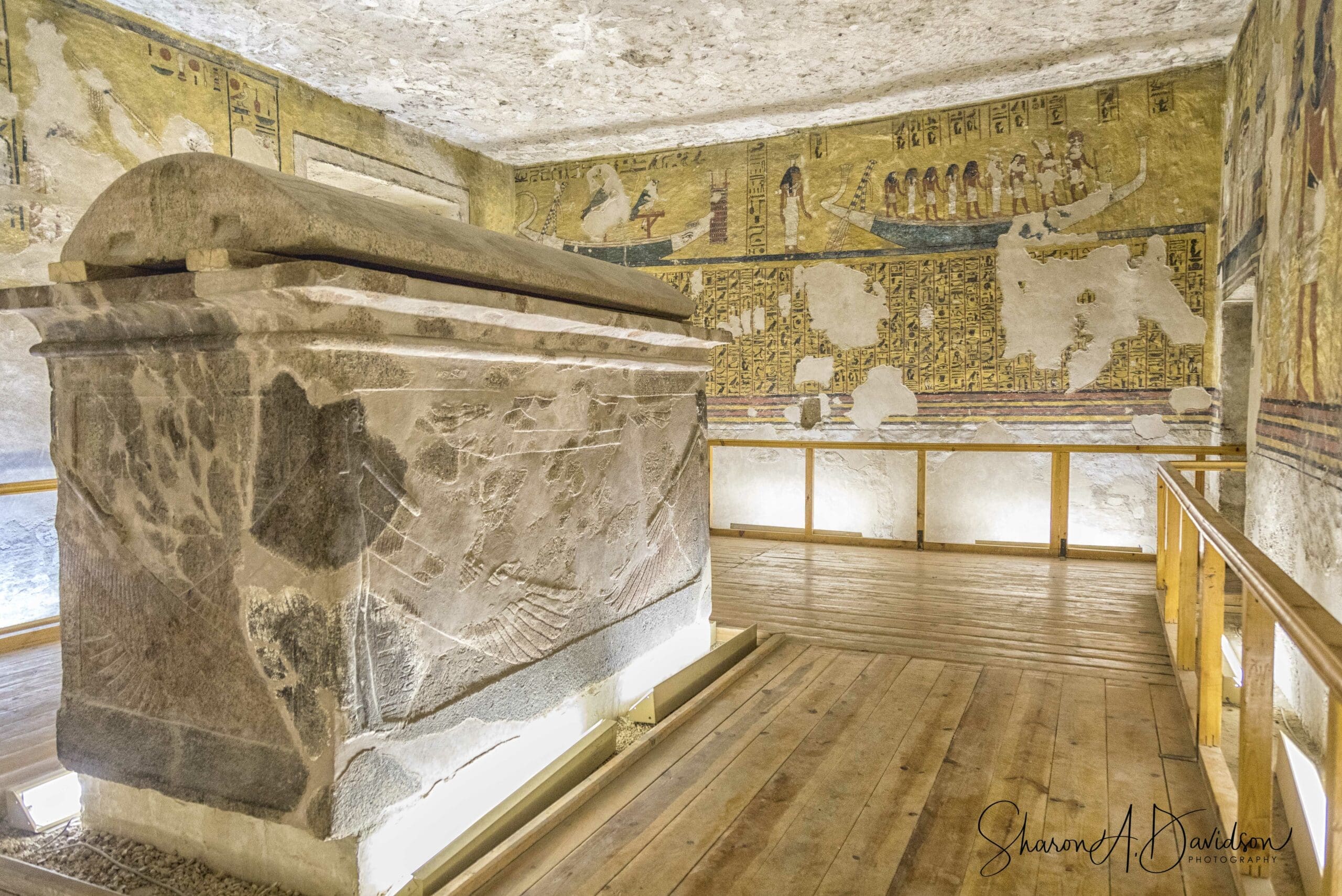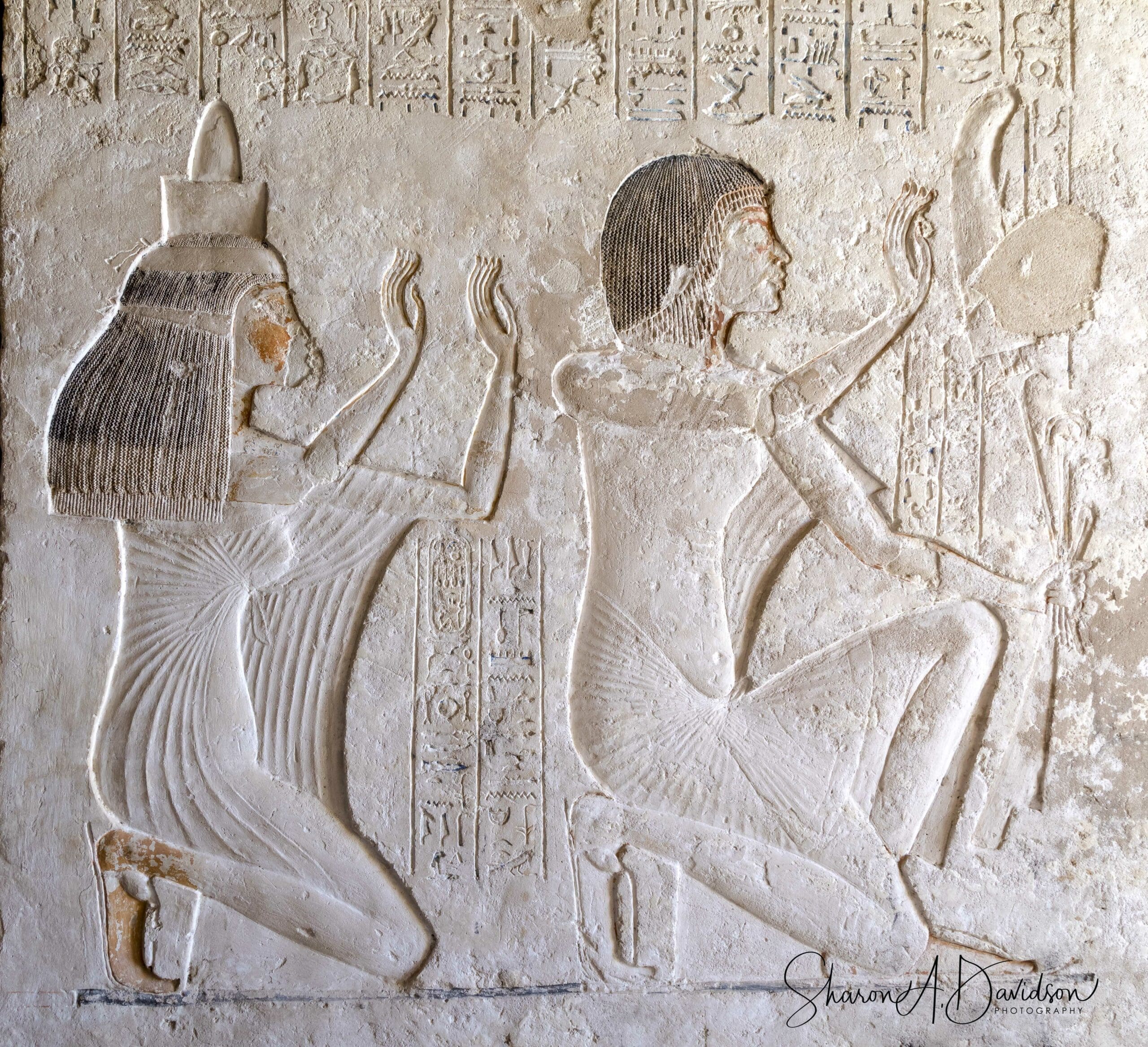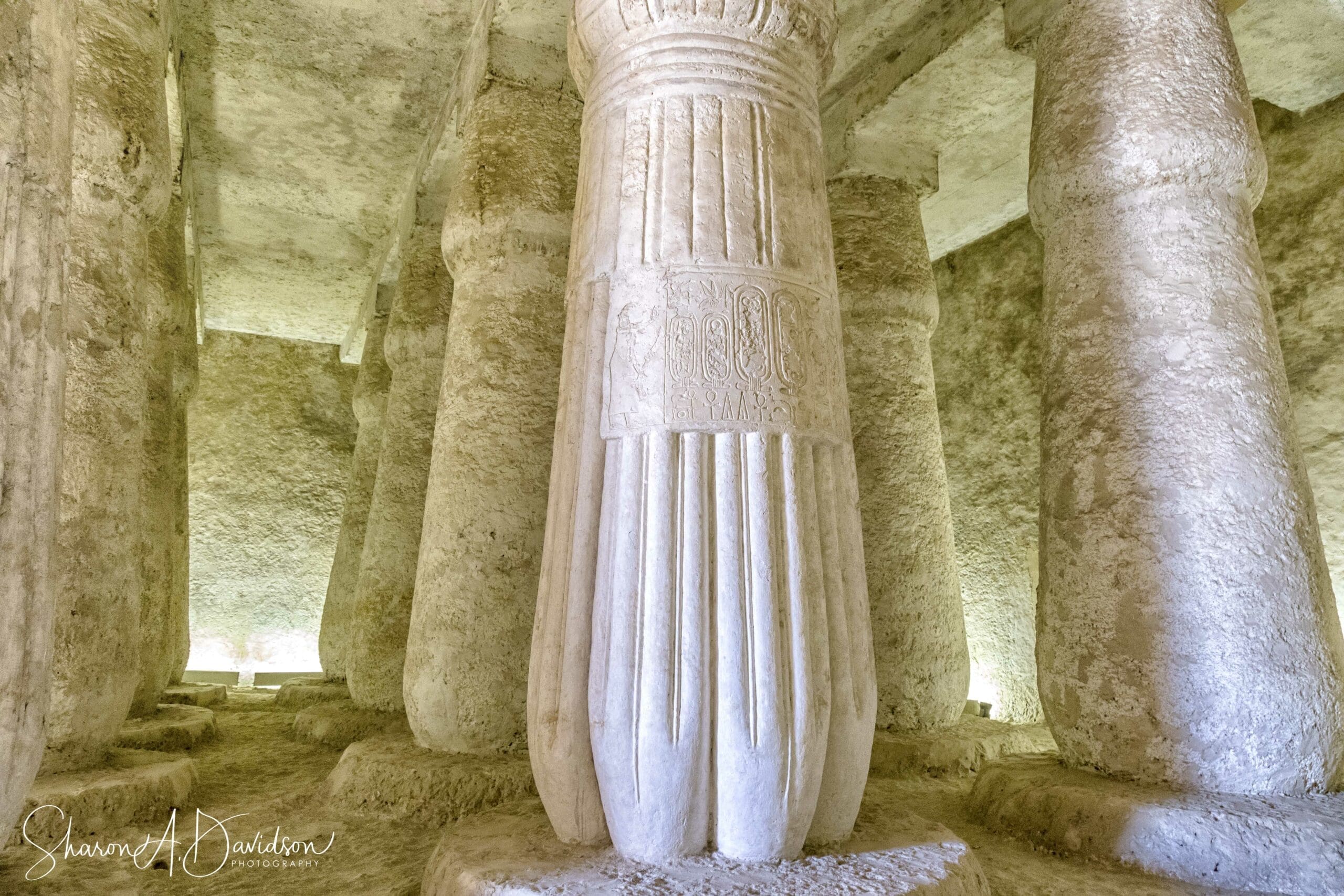We are thrilled to feature the beautiful photography and commentary of our friend Egyptologist Sharon Davidson in this guest blog about the tombs of Ay. Ay is an interesting character. He may have been a brother or half-brother of the great Queen Tiye. He was certainly a “sycophantic” advisor in Akhenaten’s kingdom, supporting his religious revolution. He was also likely Nefertiti’s dad! And certainly he was the crafty old official who managed to succeed Tutankhamun, marrying his young widow. (General Horemheb was away fighting battles – and Ay rushed to bury the king which in those days meant he sealed his succession). He was an old guy when he ruled – only four years 1323–1319 BC or 1327–1323 BC. Thank goodness today we can marvel at the beautiful tombs – not one but two – he left behind. – Laura
The Mysterious Ay
The Tomb(s) belonging to Ay
By Sharon Davidson
Ay was an official in the court of Akhetaten and had a tomb built in Amarna during the reign of Akhenaten. At the end of the Amarna period, Tutankhamun became king with the court moving back to Thebes.
After the death of the young Tutankhamun, Ay briefly became king and had a tomb (WV 23) built for himself in the Western Valley at the Valley of the Kings. Although the tomb is open to tourists, it is rarely visited. It is approximately 2 km from the parking lot, but it is worth the trip to see it. The tomb was first explored by Giovanni Belzoni in 1816. The tomb was clearly used by Ay, but Egyptologists believe the tomb may have been originally dug for Akhenaten, Smenkhare or Tutankhamun.
Ay is shown as a priest in the small tomb of Tutankhamen performing the opening of the mouth ceremony on the mummy of Tutankhamun. It has been thought that Ay took the larger tomb for himself, placing Tutankhamun in the tiny KV 62. The tomb plan of WV 23 is similar to the designs of the tombs built at Amarna.
The decoration is similar to that of Tutankhamun’s tomb and it’s no coincidence: it is believed that the same artist may have decorated both tombs. You can see in the images that the cartouches and images of Ay have been destroyed. It is thought to have been purposefully done in ancient times, destroying any vestiges of the Amarna period.
The Four Sons of Horus on the rear wall over the entrance of an undecorated chamber that may have stored the canopic jars. Duametef and Qebehsenuef are seated on the left wearing the crown of Upper Egypt holding flails and on the right are Imsety and Hapi wearing the crown of Lower Egypt with an offering table full of foodstuffs between them.
To the right of the Four Sons of Horus scenes; Ay and his ka greet Hathor, Nut and Osiris. On the right wall are scenes from the first hour of the Amduat, similar to the scenes in the tomb of Tutankhamun.
The front wall of the tomb is quite interesting as it is decorated with a scene more commonly found in private tombs and has a very Amarna-esque style showing scenes of the natural world in Egypt. Unfortunately this wall has been badly destroyed.
The sarcophagus was originally discovered broken by thieves. It was restored at the Egyptian Museum in Cairo over a century ago and returned to the tomb in the 1990’s. The scenes are from the Book of the Dead and feature the goddesses Neith, Serqet, Isis and Nephthys, wrapping each corner with their wings of protection. A winged solar disk is also featured on the sarcophagus.
The square holes in each wall are niches designed to hold magical bricks bearing inscriptions that were placed in the walls of the burial chamber to protect the mummy.
Amarna South Tomb 25 – Ay
Titles as an official – God’s father, Fan bearer on the right hand of the king, Overseer of horses of his majesty
Ay’s Amarna tomb shows him being rewarded at the window of appearances by the royal family with some of the best scenes of the royal family preserved. It is thought that Ay may have been part of the royal family, perhaps the father of Nefertiti.

The royal family – Akhenaten and Nefertiti with one of their daughter’s visible in the scene under the rays of the Aten

